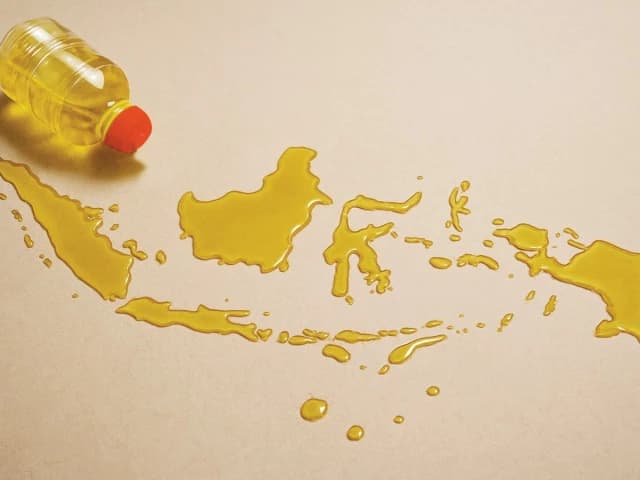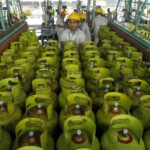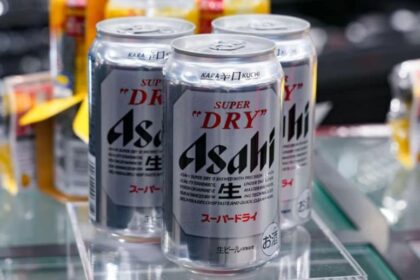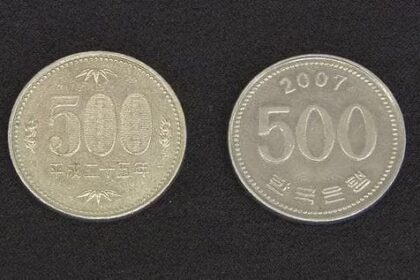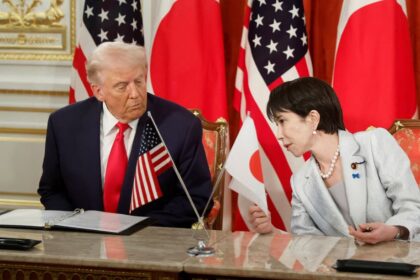Why Indonesian palm oil sits at the heart of Pakistan’s food basket
Across Pakistan, from household kitchens to major snack makers, Indonesian palm oil has become the quiet constant that keeps food affordable and supply reliable. Pakistan buys most of its edible oil from abroad, and palm oil is the dominant choice because it is available year round and usually cheaper than alternative soft oils like soybean and sunflower. Industry projections for fiscal year 2024 to 2025 placed Pakistan’s palm oil imports near 3.8 million tons, which would cover more than three quarters of the nation’s edible oil use. Roughly nine out of every ten tons come from Indonesia, with Malaysia providing most of the rest. That dependence reflects a deep commercial link between the two countries and a practical logic driven by price, logistics, and industrial needs.
- Why Indonesian palm oil sits at the heart of Pakistan’s food basket
- Price swings and the buffer effect
- Inside the supply chain that keeps shelves stocked
- Sustainability claims, certifications and what they mean
- How Indonesian policies can influence Pakistan’s prices and availability
- Can Pakistan secure supply through deeper partnerships?
- Health and nutrition, and where palm oil fits in the kitchen
- What would a domestic biodiesel push mean for Pakistan
- Risks, gaps and the near term outlook
- What to Know
The impact reaches far beyond import ledgers. Palm oil supports thousands of jobs in Pakistan’s refining and food processing sectors. Local refineries turn crude and refined palm products into vanaspati ghee, cooking oil, bakery fats, shortenings, and confectionery inputs. These ingredients sit behind much of the fast moving consumer goods market, including biscuits, snacks, instant noodles, and baked items. When palm oil flows steadily, refineries run at consistent rates, per unit costs stay predictable, and retail producers can avoid frequent price spikes.
For households, the timing matters. Food inflation hovered around 28 percent in mid 2024, straining budgets across the country. Palm oil’s year round availability and relative price advantage have acted as a stabilizer when global commodities are volatile and the rupee is under pressure. In short, Indonesian palm oil is a core input to both price stability for consumers and continuity for industry.
Price swings and the buffer effect
Palm oil typically trades at a discount to soybean and sunflower oils. That gap is central to Pakistan’s food economics. When retailers can secure palm oil at a lower price per ton, they can manage shelf prices for cooking oil, ghee, and packaged foods more effectively. The discount is not constant. In early 2025, brief spells saw sunflower and soybean oils dip below palm oil. By April, the usual order returned and palm oil again traded cheaper, with an industry reported discount of about 50 dollars per ton versus soybean oil. This ebb and flow is why refiners and major buyers watch spreads daily.
Procurement teams in Pakistan respond by adjusting their mix. They switch between crude palm oil (CPO), refined bleached deodorized palm olein (RBD palm olein), and soft oils to balance cost, quality, and availability. This flexibility reduces exposure to single market shocks and helps keep production lines moving even when shipping schedules or prices shift unexpectedly.
Another buffer comes from palm oil’s functional properties. It performs well in frying and baking, has natural oxidative stability, and remains semi solid at room temperature in many climates. Those attributes lower the need for hydrogenation, which can otherwise produce trans fat, and they reduce waste for food manufacturers by improving shelf stability and frying life.
Inside the supply chain that keeps shelves stocked
The journey from Indonesian plantations to Pakistani plates runs through a complex but increasingly transparent supply chain. Fresh fruit bunches are harvested and processed into CPO and palm kernel products in Indonesia, then sent to large refineries for further processing, or shipped directly to Pakistan for refining. Karachi and other ports handle ship arrivals, after which local refineries process and blend oils to precise specifications required by ghee makers, bakeries, and confectioners.
Traceability in this chain has changed quickly in recent years. Indonesia’s SIPERIBUN national plantation database registers plantations and mills, recording ownership and geo locations to improve transparency. Major refiners supplying Pakistan publish mill lists and make grievance logs public. Buyers can now request supply chain documentation that can be checked digitally rather than relying on trust alone. These steps allow Pakistani food companies to request specific assurances when they need to meet the requirements of multinational customers or international lenders.
Two product terms feature often in Pakistan’s palm trade. CPO is the crude oil produced at the mill, higher in free fatty acids and usually refined before use in food. RBD palm olein is a refined fraction that is widely used in cooking oil blends and food manufacture. Managing the mix of these inputs helps refiners balance cost with performance in the end product.
Sustainability claims, certifications and what they mean
Indonesia’s palm oil sector operates under the Indonesian Sustainable Palm Oil certification (ISPO), a national standard that is mandatory for growers and processors. By 2024, more than 4.2 million hectares of plantations and more than 880 companies had ISPO certification. Many producers also hold certificates from the Roundtable on Sustainable Palm Oil (RSPO) to meet the requirements of global brands that source ingredients for markets including Pakistan.
Most large Indonesian refiners supplying export markets now work under No Deforestation, No Peat, No Exploitation policies, usually called NDPE. These policies require traceability to at least the mill level, supplier verification, and clear grievance systems. The intent is to prevent new deforestation, protect peatlands, and improve labor and community practices across the supply base.
Remote sensing and public datasets suggest changes on the ground. Satellite monitoring reported a decrease in land conversion linked to palm oil of about 9 percent in 2024. Global forest data also showed an 11 percent reduction in Indonesia’s primary forest loss during the same period, which overlapped with an El Nino year. These are encouraging signals, although sustained progress depends on compliance, enforcement, and support for smallholders.
There is also a broader context. Palm oil delivers high yields per hectare. Compared with other oil crops, it produces a much larger share of the world’s vegetable oil using a smaller share of land. Switching wholesale from palm oil to other oils would require more land somewhere else, which could shift environmental costs rather than solve them. The stronger route is better practices: protect high carbon and high conservation value areas, reduce new planting on natural ecosystems, improve yields on existing farms, and prioritize food use over non food uses when supply is tight.
How Indonesian policies can influence Pakistan’s prices and availability
Domestic policy in Indonesia can change export availability. The country’s biodiesel program blends palm based fuel into diesel. The current plan, often called B40, is meant to move toward a 40 percent blend, and it absorbs a significant volume of crude palm oil every year, roughly in the range of 1.2 to 1.7 million tons. Industry data in 2023 and 2024 showed palm oil use for biodiesel overtaking its use for food within Indonesia. Producers have warned that if output growth is not strong enough, higher domestic use could tighten exports and affect food buyers abroad.
Importers remember 2022, when Indonesia briefly restricted exports following a domestic cooking oil shortage. That episode caused price spikes and disrupted supply chains. While the policy environment is different today, it shapes how buyers in Pakistan plan storage, contracts, and supplier diversification.
Pakistan’s government has acknowledged the strategic nature of edible oil supplies. At the Pakistan Edible Oils Conference in Karachi in January 2025, the federal minister for industries and production said Pakistan relies on imports for about 90 percent of its edible oils, importing around 3 million tons of palm oil from Indonesia and Malaysia in a typical year. He invited partners from both countries to invest in local agriculture and encouraged efforts to increase domestic oilseed production, especially rapeseed and sunflower.
Can Pakistan secure supply through deeper partnerships?
Other large importers are formalizing long term cooperation with Indonesia. In 2025, the Indian Vegetable Oil Producers Association and the Indonesian Palm Oil Association signed a three year memorandum focused on reliable supplies, technical exchange, sustainability, and inclusion of smallholders. That structure gives the two industries a platform to manage information, coordinate on standards, and troubleshoot supply issues before they become crises. India imports a majority of its edible oil and has long relied on Indonesia for palm supplies.
Pakistan could pursue a similar agenda with Indonesia and Malaysia to improve predictability and quality assurance. The Council of Palm Oil Producing Countries (CPOPC), founded by Indonesia and Malaysia, supports national certification schemes like ISPO and the Malaysian Sustainable Palm Oil certification. Deeper engagement with these frameworks would help Pakistani refiners and food companies align documentation with global buyers, reduce reputational risk, and keep multiple supply doors open at once.
Across Asia, governments are weaving food security into broader trade plans. Vietnam and Indonesia have agreed to lift bilateral trade with a stated focus on food industry links and reliable supply chains. The direction of travel is clear. Supply security, sustainability compliance, and data transparency are becoming central features of palm oil trade, not optional extras.
Health and nutrition, and where palm oil fits in the kitchen
Palm oil is a vegetable oil that contains no trans fat in its natural state and has a balanced composition that supports frying, baking, and stable food formulations. It contributes energy and helps carry fat soluble vitamins. Many producers use palm oil or blends of palm fractions because it delivers a consistent taste and texture in products like ghee, shortenings, and bakery fats, while holding up well under high heat.
No single fat is a silver bullet for health. Dietary guidance stresses moderation and a mix of fats. For food producers, palm oil’s stability and cost efficiency matter because they help keep products affordable. For consumers, the key is diverse diets and mindful consumption alongside the benefits of reliable access to cooking fats.
What would a domestic biodiesel push mean for Pakistan
Indonesian industry leaders have suggested that Pakistan could test a biodiesel blend in the range of B5 to B10. A measured approach could diversify energy sources and save foreign exchange without disrupting household cooking oil supplies. The crucial design point is feedstock. Using waste oils and non food grade materials where possible reduces pressure on edible oil markets.
Any transition would need infrastructure for blending and distribution, clear quality standards, and careful sequencing to avoid surprise stress on food buyers. A gradual pilot, paired with storage buffers and transparent reporting, can prevent unintended knock on effects while building local know how in low carbon fuels.
Risks, gaps and the near term outlook
Regulation is tightening in key markets. The European Union’s deforestation regulation begins applying requirements for deforestation free supply chains and strict traceability. Indonesian producers and officials are engaging with trading partners to seek a fair implementation timeline and recognition of national systems like ISPO. Investment in mapping and smallholder support is increasing to meet new rules. Buyers in Pakistan who export finished goods to the EU will need to keep documentation in line with these standards to avoid delays.
Weather remains another swing factor. El Nino and La Nina can affect yields, while currency moves and freight rates shape import costs. Many Pakistani refiners are expanding storage, improving procurement systems, and diversifying suppliers to include both Indonesia and Malaysia. Hedging strategies and agility in switching between CPO, RBD palm olein, and soft oils can reduce risk.
On the home front, Pakistan’s push to revive rapeseed and sunflower cultivation, expand refining capacity, and strengthen port logistics can lighten import risks over time. Even with these steps, Indonesian palm oil will remain the backbone of supply for the foreseeable future. The combination of price competitiveness, volume availability, and improving sustainability assurance makes it central to Pakistan’s food security planning.
What to Know
- Palm oil covers more than three quarters of Pakistan’s edible oil use, with projected imports up to 3.8 million tons in fiscal year 2024 to 2025.
- Indonesia supplies roughly 85 to 90 percent of Pakistan’s palm oil, with Malaysia providing most of the remainder.
- Palm oil usually trades at a discount to soybean and sunflower oils. By April 2025 it was about 50 dollars per ton cheaper than soybean oil, after a brief reversal earlier in the year.
- ISPO certification covers more than 4.2 million hectares and more than 880 companies in Indonesia, while many exporters follow NDPE policies and publish mill lists and grievance logs.
- Satellite data indicated a 9 percent drop in land conversion linked to palm oil in 2024 and an 11 percent reduction in primary forest loss in Indonesia during the same period.
- Indonesia’s biodiesel program, moving toward B40, absorbs around 1.2 to 1.7 million tons of crude palm oil per year and can tighten export availability.
- Pakistan’s edible oil dependency is near 90 percent of domestic demand, and officials have called for investment in local oilseed crops and related infrastructure.
- India signed a three year cooperation pact with Indonesia on sustainable palm oil trade, offering a template for structured supply security and shared standards.
- Traceability has improved through Indonesia’s SIPERIBUN database and corporate disclosures, allowing digital checks of supply origins.
- Key watch points ahead include Indonesian biodiesel policy, European deforestation rules, weather patterns, and currency and freight costs.


